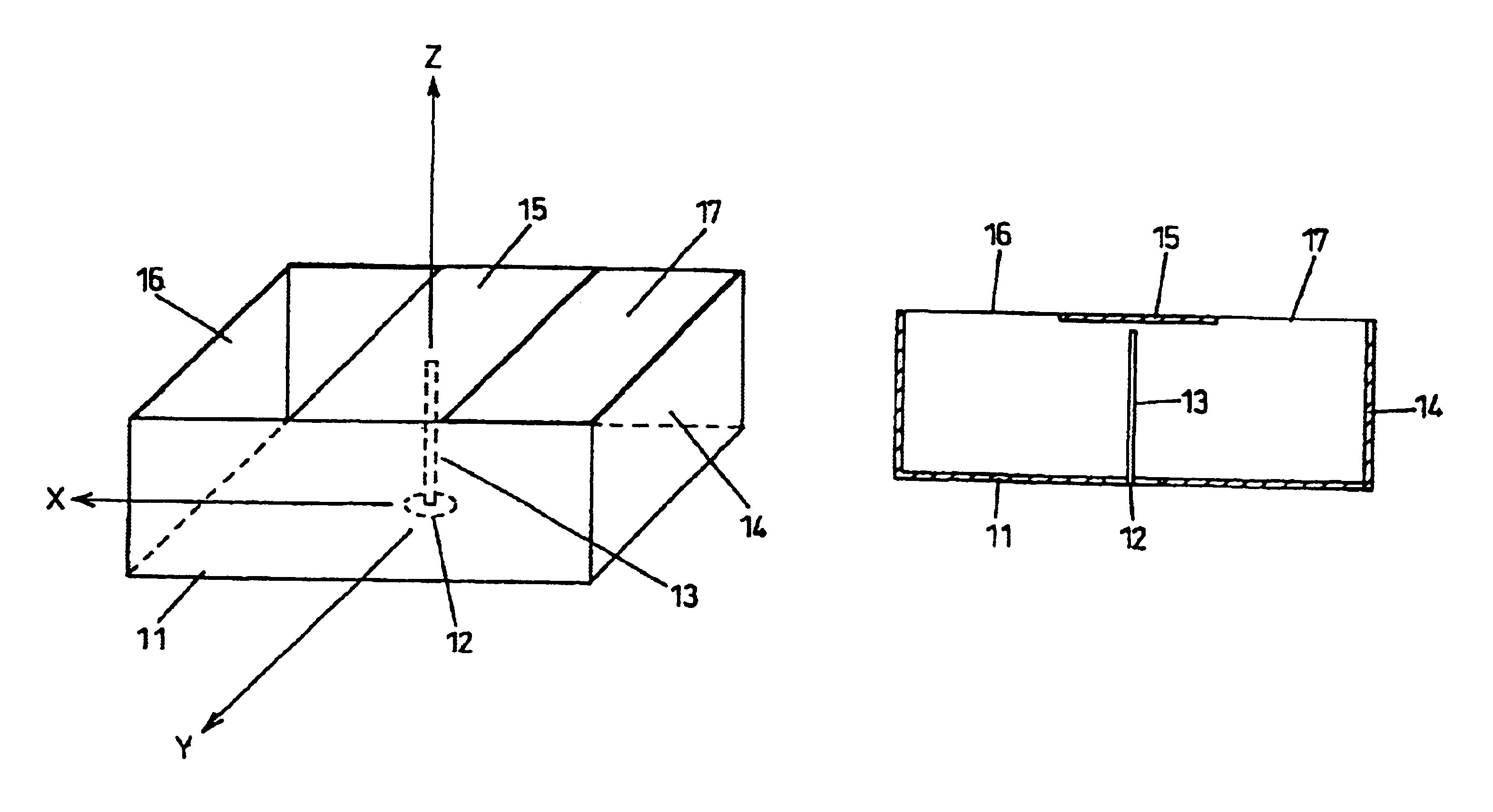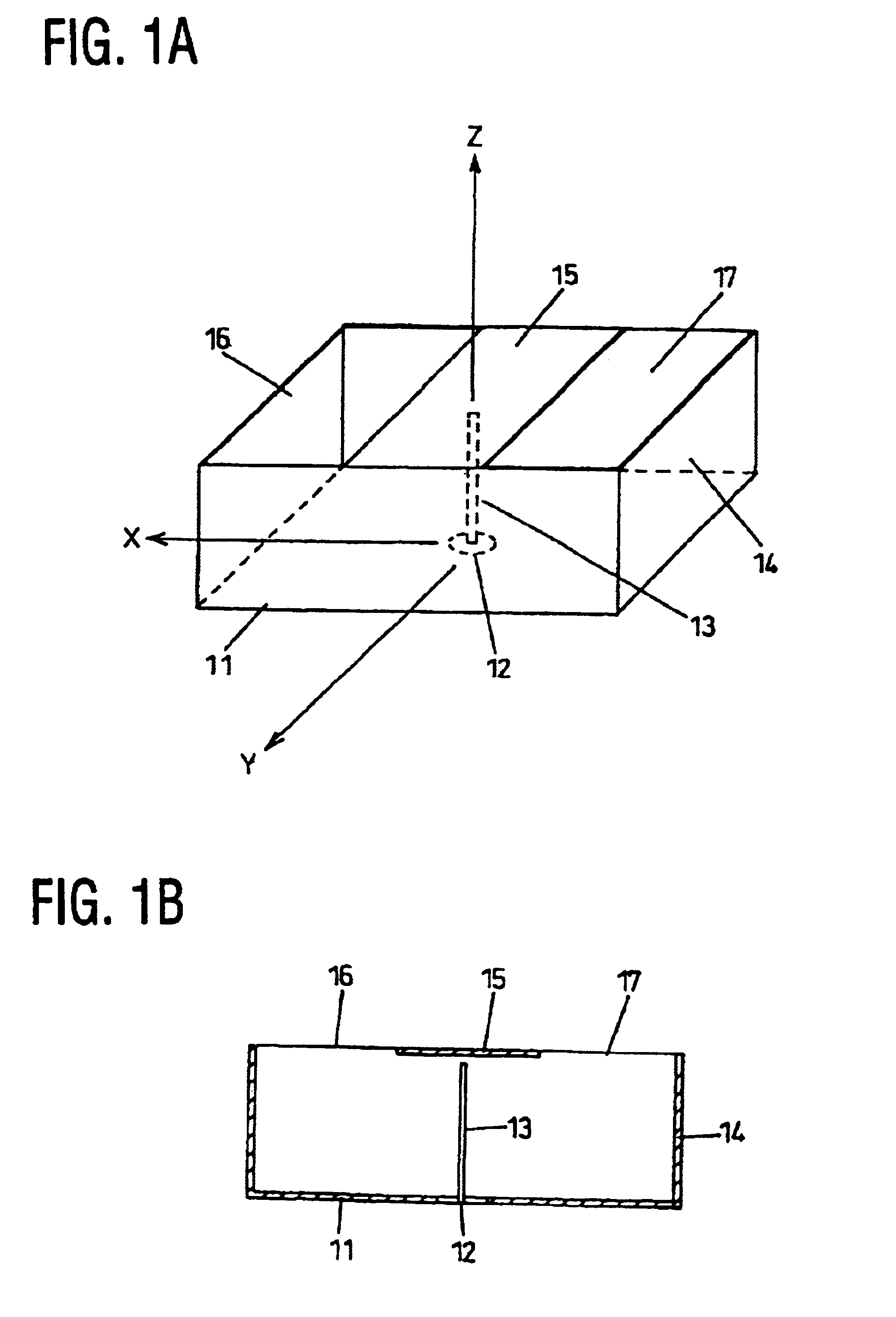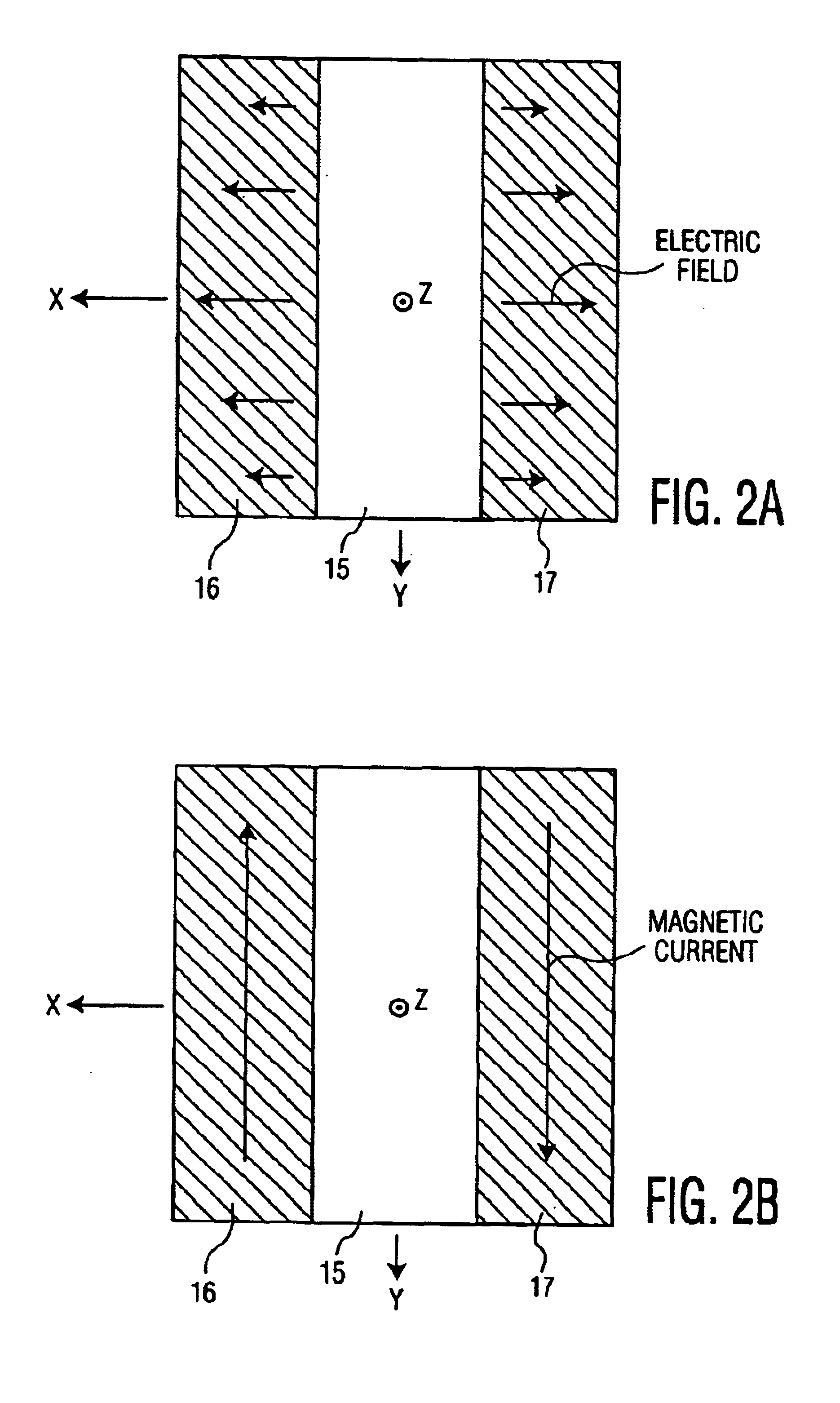Antenna, antenna device, and radio equipment
a technology of antenna device and antenna device, applied in the direction of resonant antenna, substantially flat resonant element, differential interacting antenna combination, etc., can solve the problems of reflection loss, deterioration of radiation efficiency, and large size of the first prior art antenna, so as to minimize directivity
- Summary
- Abstract
- Description
- Claims
- Application Information
AI Technical Summary
Benefits of technology
Problems solved by technology
Method used
Image
Examples
first embodiment
[0073]FIG. 1A is a schematic perspective view of a monopole antenna in the present invention;
[0074]FIG. 1B is a cross section of the monopole antenna in the first embodiment of the present invention;
[0075]FIG. 2 is a drawing showing the operation principle of the first embodiment;
[0076]FIG. 3 is a schematic perspective view showing a working prototype of the first embodiment;
[0077]FIG. 4 is a diagram showing the radiation directivity of the working prototype of the first embodiment;
[0078]FIG. 5 is a graph showing the impedance characteristics of the working prototype of the first embodiment;
second embodiment
[0079]FIG. 6A is a schematic perspective view of a monopole antenna according to the present invention;
[0080]FIG. 6B is a cross section of the monopole antenna in the second embodiment of the present invention;
[0081]FIG. 7 is a schematic perspective view showing a working prototype of the second embodiment;
[0082]FIG. 8 is a diagram showing the radiation directivity of the working prototype of the second embodiment;
[0083]FIG. 9 is a graph showing the impedance characteristics of the working prototype of the second embodiment;
third embodiment
[0084]FIG. 10A is a schematic perspective view of a monopole antenna according to the present invention;
[0085]FIG. 10B is a cross section of the monopole antenna in the third embodiment of the present invention;
PUM
 Login to View More
Login to View More Abstract
Description
Claims
Application Information
 Login to View More
Login to View More - R&D
- Intellectual Property
- Life Sciences
- Materials
- Tech Scout
- Unparalleled Data Quality
- Higher Quality Content
- 60% Fewer Hallucinations
Browse by: Latest US Patents, China's latest patents, Technical Efficacy Thesaurus, Application Domain, Technology Topic, Popular Technical Reports.
© 2025 PatSnap. All rights reserved.Legal|Privacy policy|Modern Slavery Act Transparency Statement|Sitemap|About US| Contact US: help@patsnap.com



